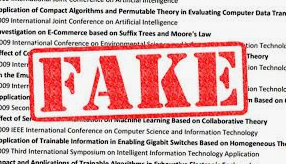Nidhi Subbaraman at the Wall Street Journal provides an excellent overview of the brewing scientific publication crisis. The article (Flood of Fake Science Forces Multiple Journal Closures —
Wiley to shutter 19 more journals, some tainted by fraud, WSJ, May 14, 2024), spurred by the recent announcement by Wiley that it will be closing 19 journals which were, “infected by large-scale research fraud,” provides a timely update on the issue.
While it is not a new issue, the volume of fake journal publications is increasing. According to the report, Wiley retracted more than 11,300 papers in the past two years.
The source of these fraudulent papers is coming from so-called “paper mills.” It is expected that generative AI is the fuel accelerating the volume and creativity of these fake scientific papers.
And, while the publishers are frantically working to implement technical solutions, the Paper Mills are keeping in lock step with their own nefarious technology.
Causes for this trend are multi-faceted. High pressure for scientists to publish or perish; the easy access to generative AI writing tools; the limitations by publishers to detect the fake papers – anyone can add to the list.
To learn more about how we can combat this issue, check out united2act — a group of international stakeholders working collaboratively to address the collective challenge of paper mills in scholarly publishing.

